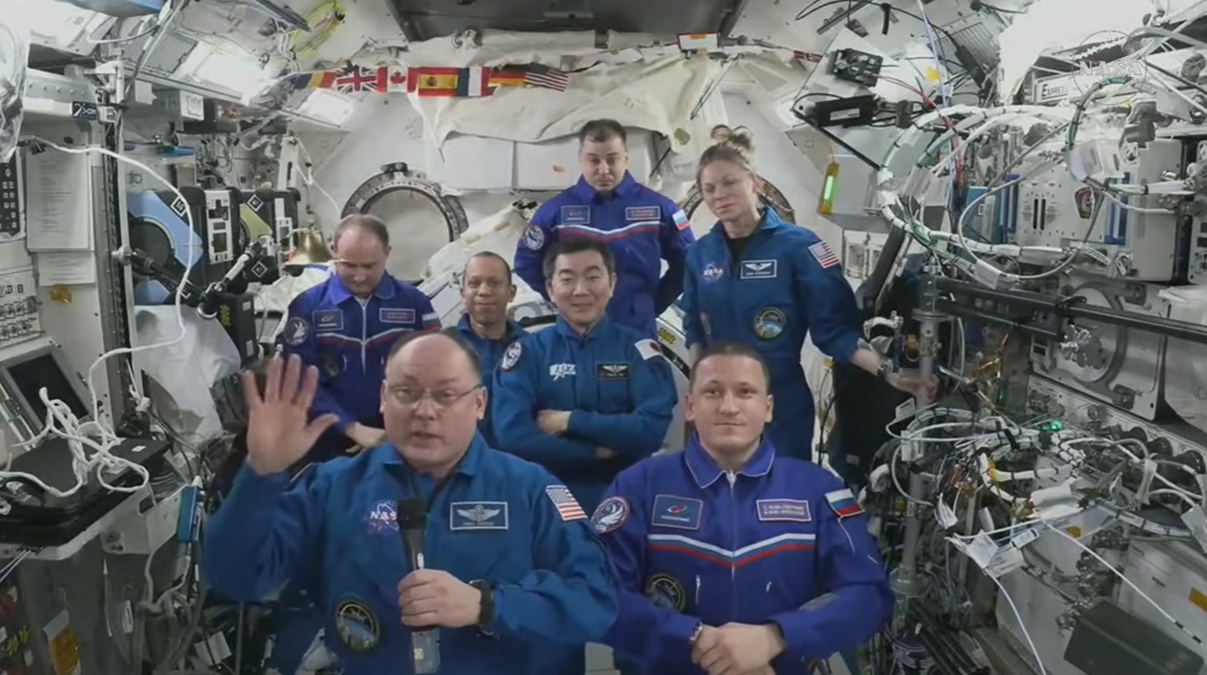Rocket Tests Planned for NASA’s Next Spaceship

With NASA'sannouncementthat aerospace firm Lockheed Martin will build its shuttle successor Orion,the agency is forging ahead with a test flight plan for the rockets to launchthose future vehicles spaceward.
NASA istargeting April 2009 to test the first stage of its Ares I rocket, afive-segment booster evolved from its four-segment solid rocket boosters (SRBs) used to launch space shuttles into orbit. The rocketwill launch astronaut crews into orbit to either dockat the International Space Station (ISS) or press onward to the Moon -though the latter would require rendezvous with a lunarlander and EarthDeparture Stage launched by the planned heavy-lift AresV rocket.
"It's aproof of concept that we're going to take this solid rocket motor that wasdesigned for the shuttle, and we're going to use it in this new application,"said Jeff Hanley, manager of NASA's Constellation program. "We're going to lookat the dynamics at the separations between the first stage and a facsimile ofthe upper stage."
Known asAres I-1, the first stage test will launch an inert - but instrumented - secondstage and mock-Orion vehicle to suborbital heights to evaluate the SRB's thrust and roll control.
"We don'twant to put [cryogenic propellant] in this vehicle," said Steven Cook, NASA'sexploration launch projects manager, of the simulated second stage for Ares I-1."We just want to get it as dynamically similar as possible to the actual launchvehicle."
NASA hasbudgeted about $300 million for the initial Ares I-1 tests, which include theApril 2009 launch from Pad 39B here at the Kennedy Space Center (KSC), as wellas a second space shot six months later if necessary, Hanley added. The final,two million-pound (907,184-kilogram) rocket is expected to be able to boost a25-ton payload into orbit and will be hauled to the launch pad atop NASA'sMobile Launch Platform by an existing Crawler transport.
Hanley saidthe first full-up Ares I launch is expected to lift off in June 2012, with thefirst orbital space shot with astronauts aboard slated for September 2014. Thatcrewed launch, he added, would be the third of four orbital test flights.
Breaking space news, the latest updates on rocket launches, skywatching events and more!
NASA's AresI rocket will stand about 309 feet (94 meters) tall and consists of primarilyof two stages capped by the Orion crew capsule and a four-engine escape tower.According to a NASA description, Ares I's first stage- the SRB-derived booster - is reusable, and propels Ares I to a speed of aboutMach 6.1 and an altitude of about 200,000 feet (60,960 meters) beforeseparating 2.5-minutes into flight and falling back to Earth on parachutes.
The second stageharbors the liquid oxygen/liquid hydrogen fueled J-2X engine, an evolution ofNASA's Apollo-era Saturn V J-2 motor and the never-flown J-2S version. It isthat upper stage that will propel the Orion crew capsule to an altitude ofabout 63 miles before separating, with the spacecraft's service modulecompleting the trip to a 185-mile (297-kilometer) orbit.
An interstage segment connects the Ares I-1 first stage withits simulated upper segment - which will fall into the Atlantic Ocean afterseparating - and also holds the roll control and separation engines for thetest flight, Cook said.
During thefirst Ares I-1 test, the first stage is expected to burn for about 130 seconds,reach a speed of about Mach 4 and an altitude of 250,000 feet (76,200 meters),Cook said.
Like thefour-segment SRBs used in space shuttle launches, theAres I-1 first stage will burn a star-shaped mix of the solid propellant polybutadiene acrylonitrile(PBAN), though the final mix and rocket nozzle designs have yet to bedetermined, NASA officials said. One of the five segments comprising the Ares I-1first stage will also be a dummy unit, since the first full-up booster will notbe ready until later in 2009, they added.
"We believewe'll be able to get enough similarity to be able to anchor our models, whichis really the reason for these flight tests," Cook said, of the decision to usethe dummy SRB segment.
ATK Thiokolhas already ground-tested a five-segment SRB during a 2003 study of boosterperformance and margins for the shuttle program. But Thiokol officials saidthat the goals of that test were quite different than those required tocrew-rate the Ares I rocket.
"The realproof in the pudding will be in this flight," Cook said of the Ares I-1 test."And we'll see if we need to make any changes before we go into finalproduction."

Tariq is the award-winning Editor-in-Chief of Space.com and joined the team in 2001. He covers human spaceflight, as well as skywatching and entertainment. He became Space.com's Editor-in-Chief in 2019. Before joining Space.com, Tariq was a staff reporter for The Los Angeles Times covering education and city beats in La Habra, Fullerton and Huntington Beach. He's a recipient of the 2022 Harry Kolcum Award for excellence in space reporting and the 2025 Space Pioneer Award from the National Space Society. He is an Eagle Scout and Space Camp alum with journalism degrees from the USC and NYU. You can find Tariq at Space.com and as the co-host to the This Week In Space podcast on the TWiT network. To see his latest project, you can follow Tariq on Twitter @tariqjmalik.
